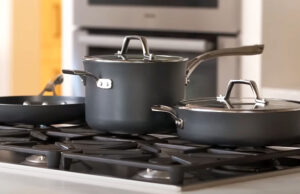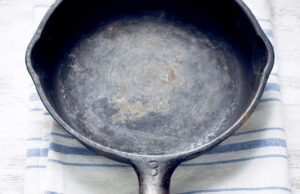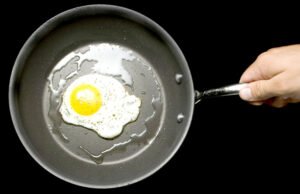As an Amazon Associate, I earn from qualifying purchases at no extra cost to you.
GE Dishwasher Troubleshooting: Fix Problems Fast and Easy
The plate still has grease. The glass has spots. The cycle ends, but nothing feels clean. You stand there staring, annoyed, asking why. A dishwasher should save time, not make you rewash. But when it stops working right, frustration takes over. You think about calling repair, but what if the fix is simple? Let’s dig into the most common GE dishwasher problems together, in a calm and easy way.
Troubleshooting Your GE Dishwasher Made Simple
Check Power and Controls First
When your GE dishwasher refuses to start, the very first thing to look at is power. It may sound silly, but loose plugs or tripped breakers are more common than most think. A dishwasher needs steady power to run. Without it, the buttons won’t respond, and nothing happens.
Next, check the control panel. If the display is blank, it could mean a lock is turned on. GE dishwashers often have a child lock feature. When this is active, pressing buttons will not work. Hold the right button for a few seconds to unlock it.
Sometimes the cycle does not start because the door is not shut all the way. Even if it looks closed, the latch may not be clicking into place. Push firmly until you hear the sound. A faulty latch can also stop the dishwasher. In that case, it might need replacement.
Always look for error codes too. GE dishwashers often flash codes that tell what is wrong. The manual lists what each code means. Many times, it will point straight to the issue, whether it is draining, heating, or sensing water.
- Make sure the plug is secure.
- Reset the breaker if it tripped.
- Unlock the control panel.
- Close the door latch tight.
- Look for flashing error codes.
Inspect Water Supply
Water flow is the next important check. A GE dishwasher without water will not clean. The water valve under the sink must be open. If it is closed even halfway, the machine may hum but not fill. Turn it fully on.
Kinks in the water line can also stop flow. The hose that connects under the sink sometimes bends when items are stored. Straighten it carefully. A cracked or damaged hose may leak, so replace if needed.
Inside the machine, the inlet valve lets water in. If it gets clogged with debris, the dishwasher may not fill. You may hear it click but still see no water. In this case, the valve may need cleaning or a new one installed.
Do not forget water pressure. Dishwashers need enough pressure to spray forcefully. If other taps in the house are slow, the dishwasher will also struggle. This may be a house plumbing issue rather than the dishwasher itself.
- Confirm valve under sink is open.
- Check hose for kinks or leaks.
- Inspect inlet valve for clogs.
- Notice if water pressure is weak.
Clean Spray Arms and Filters
Dirty dishes after a full cycle usually mean spray arms or filters are blocked. The spray arms spin and spray water, but food particles often clog the holes. A simple toothpick or pin clears them. Remove the arms if needed and rinse under warm water.
The filter at the bottom of the dishwasher traps bits of food. If it fills up, water cannot drain or spray properly. Remove the filter, wash it under the tap, and put it back. This keeps water moving freely.
Grease buildup is another issue. Over time, soap and grease stick to parts inside. This makes spraying weaker. Running a cleaning cycle with vinegar or dishwasher cleaner helps. It removes buildup and keeps parts working smoothly.
Also check if the arms can spin without hitting dishes. Sometimes tall items block them from moving. Loading carefully prevents this. Even small things like a spoon sticking out can stop the spray arm.
- Clear holes in spray arms.
- Rinse the filter under water.
- Run a vinegar clean cycle.
- Load dishes so arms spin free.
Fix Drainage Problems
A GE dishwasher that leaves water inside is a clear sign of a drainage issue. Start by checking the drain hose. If it is clogged, water will not move out. Disconnect and flush it with water until it is clear.
Next, look at the air gap near the sink faucet, if your setup has one. When food clogs this, water backs up into the dishwasher. Remove the cap and clean it out. This simple step fixes many drainage complaints.
The pump at the bottom also moves water out. If broken or jammed, it cannot work. Pieces of food, glass, or plastic sometimes get stuck. Carefully check and remove anything blocking it. If it still does not work, the pump may need replacement.
Also confirm the sink drain is not blocked. A clogged kitchen drain keeps the dishwasher from emptying. If water pools in the sink too, the problem is not just the dishwasher. Call a plumber if needed.
- Flush drain hose.
- Clean the air gap.
- Check the pump for blockages.
- Make sure sink drain flows well.
Check Heating and Drying
When dishes come out wet and cold, heating is likely the issue. GE dishwashers use a heating element to warm water and dry dishes. If it fails, cycles will not clean or dry well. Look at the element at the bottom for damage or breaks.
Water needs to be hot enough during washing. If your home’s water heater is set too low, the dishwasher will struggle. Set it around 120°F for best results. Run hot water in the sink before starting a cycle to bring heat faster.
Some models use a fan or vent to help drying. If steam stays trapped, dishes will stay wet. Check if the vent opens during drying. A blocked vent can be cleaned, but a broken one may need replacement.
Rinse aid also helps with drying. Without it, water spots form, and glasses look dull. Always keep the rinse aid dispenser filled. It reduces water marks and speeds up drying.
- Inspect heating element.
- Adjust home water heater to 120°F.
- Make sure vent opens properly.
- Use rinse aid for better drying.
Reset and Maintenance
Sometimes all a dishwasher needs is a reset. Many GE dishwashers reset when you press and hold the Start or Cancel button for a few seconds. This clears errors and restarts the system.
Keeping up with regular care prevents most problems. Clean the filter once a week. Wipe the door seals so they do not crack. Run a cleaning cycle monthly to keep buildup away. Simple care makes the machine last longer.
Check for leaks around the door. A loose gasket may cause water on the floor. Press it back into place or replace if cracked. Ignoring leaks can damage your kitchen floor.
Also listen for strange sounds. Grinding, buzzing, or rattling may mean something is stuck. Address it early before it damages parts. Most small problems become big if left too long.
- Reset by holding Start or Cancel.
- Clean filter weekly.
- Check door gasket for leaks.
- Run a monthly cleaning cycle.
Final Thoughts
A GE dishwasher can be tricky, but many problems are easy to solve at home. From checking power to cleaning filters, small actions make big differences. With patience and care, your dishwasher runs smoother, saves time, and keeps dishes sparkling.
| Problem | Likely Cause | Easy Fix |
|---|---|---|
| Dishwasher not starting | Power loss or door latch | Check plug, breaker, and latch |
| No water filling | Closed valve or clogged inlet | Open valve, clean inlet |
| Poor cleaning | Blocked spray arms or dirty filter | Clear spray arms, wash filter |
| Water not draining | Clogged hose or pump | Clean hose, inspect pump |
| Not drying | Bad heater or no rinse aid | Check heater, add rinse aid |
| Leaks | Worn gasket | Replace door seal |
Do GE dishwashers stop mid-cycle often?
Sometimes GE dishwashers do stop in the middle of a wash. This can feel frustrating, but it usually points to simple issues. The most common reason is a door that is not latched tight. Even if it seems shut, the latch may be loose. When the door moves slightly, the machine stops to prevent leaks. Pressing it firmly may help, but sometimes the latch needs replacement.
Another cause is power loss. A tripped breaker or loose plug can cut power suddenly. The dishwasher will stop right away and not resume. Resetting the breaker or plugging it back firmly often solves this. It is worth checking before calling repair.
Water supply problems can also pause cycles. If the dishwasher senses no water, it cannot continue. A closed valve or kinked hose may cause this. Fixing water flow usually allows the cycle to restart normally.
Overheating is another reason. If the motor or control board gets too hot, the dishwasher stops for safety. Letting it cool down may allow it to work again. But if it keeps happening, parts may need inspection.
Error codes may flash when a cycle stops. These codes show what is wrong. Reading them in the manual helps pinpoint the cause. Many times, the fix is simple and does not require service.
Cycles may also stop if the float switch is stuck. This small part measures water inside. If it says the tub is full when it is not, the cycle pauses. Cleaning the float can restore normal function.
So, while it feels worrying when a dishwasher stops mid-cycle, the causes are often easy to find. Power, latch, water, and heat are the main checks. With patience, most of these issues can be fixed at home without stress.
Can GE dishwashers work without hot water?
Yes, GE dishwashers can run without hot water, but the results are not great. These machines rely on heat to clean and sanitize dishes. Cold water alone will not break down grease or remove heavy food well. Your dishes may look dull or still feel dirty after a cycle.
Inside, a heating element warms water, but it works best when starting with hot water from the home supply. If the water heater is set too low, the dishwasher struggles. Setting the heater to about 120°F gives the machine the boost it needs. This way, dishes come out cleaner and safer.
Running only on cold water can also affect drying. Without heat, water stays on dishes longer. They come out wet and spotty. Using rinse aid helps a bit, but it does not replace heat. Drying takes much longer and may leave streaks.
Another issue is energy use. The dishwasher will try to heat cold water on its own. This puts extra strain on the element and uses more power. Over time, this may wear out parts faster and raise energy bills.
Sometimes people avoid hot water to save money. But in the long run, the machine works harder and may break sooner. It is better to let it use hot water from the start. This balances cleaning, drying, and energy use more efficiently.
So while the dishwasher will still run with cold water, it is not the best choice. For proper cleaning, hot water is needed. It keeps dishes sparkling and helps the dishwasher work as designed.
Do GE dishwashers need regular cleaning?
Yes, GE dishwashers need regular cleaning to keep working well. Many people assume the dishwasher cleans itself, but food and grease collect inside over time. If ignored, this leads to smells, clogs, and poor washing results.
The filter at the bottom traps food bits. It should be rinsed once a week under running water. If it fills up, water will not flow smoothly, and dishes will not get clean. A clogged filter is one of the top reasons dishwashers fail.
Spray arms also need care. Small holes get blocked by tiny bits of food. Cleaning them every month with a toothpick or running them under water keeps sprays strong. If blocked, water cannot reach all dishes.
Grease and soap build up along the door seals and walls too. Wiping them with a damp cloth prevents mold and smells. Ignoring this leads to leaks when seals crack or wear out.
Running a cleaning cycle once a month also helps. You can use white vinegar or a store-bought cleaner. This removes grease, limescale, and buildup inside the machine. It also keeps parts running smoother and extends the life of the dishwasher.
Cleaning does not take much time, but it saves big trouble later. A few minutes weekly and monthly care keep the dishwasher working like new. With regular cleaning, dishes always come out sparkling, and the machine lasts longer.
Can GE dishwashers be reset easily?
Yes, GE dishwashers can be reset easily in most cases. Resetting helps when the machine shows errors or stops working correctly. It clears the memory and starts fresh.
The common way is to press and hold the Start or Cancel button for about three seconds. This cancels the current cycle and resets the system. Once done, you can select a new cycle, and it should work again.
Some models may also reset when you turn off the power. Unplugging the machine or flipping the breaker off for a minute does the trick. When power is restored, the dishwasher usually starts fresh.
Error codes often go away after a reset. This is helpful when a minor glitch confuses the system. But if the same code returns often, it may signal a deeper issue that needs attention.
Resetting does not fix broken parts, but it helps the control board restart. It is like rebooting a computer. Many times, this solves odd problems without repair.
So, yes, resetting is simple. Whether by holding a button or cutting power, anyone can do it. It is a useful first step whenever the dishwasher acts up.

Frequently Asked Questions (FAQs)
Is it normal for a GE dishwasher to be noisy?
Some noise is normal in GE dishwashers. Water spraying and pumps running make sound. But very loud grinding or banging is not normal. These noises may mean something is stuck in the pump or spray arm. Checking and cleaning these parts often reduces the sound. If the noise continues, a part may be wearing out and need replacement.
Can I run a GE dishwasher with only a few dishes?
Yes, you can run it with a few dishes, but it is not efficient. The machine will still use the same water and power as a full load. Over time, this adds to higher bills. It is better to wait until the dishwasher is nearly full. This saves energy and makes the most of each cycle.
Do I need special detergent for a GE dishwasher?
Yes, you should use dishwasher detergent made for automatic machines. Regular dish soap creates too many suds and may cause leaks. Tablets, powders, or gels designed for dishwashers work best. Always check the manual for recommendations. Using the right detergent ensures good cleaning and protects the machine.
Is it safe to open a GE dishwasher mid-cycle?
Yes, it is safe to open it mid-cycle, but water may splash out. The machine will pause when you open the door. Once you close it again, the cycle usually resumes. This is useful if you forgot to add a dish. However, opening during the drying phase may release a lot of steam, so be cautious.
Can a GE dishwasher leak from the door?
Yes, leaks from the door are common. They usually happen when the door gasket is loose or cracked. Food or grease on the seal can also prevent a tight close. Cleaning or replacing the gasket often stops leaks. If ignored, leaks can damage your floor or cabinets.
Do I need to rinse dishes before putting them in?
Not always. GE dishwashers are designed to handle food bits. But scraping off large pieces is a good idea. Too much food may clog the filter or spray arms. Rinsing lightly is fine, but full washing before loading is not needed. The dishwasher does the heavy work.
Is it worth repairing an old GE dishwasher?
It depends on the age and cost of repair. If the dishwasher is under ten years old, repair is often worth it. But if parts are expensive and the machine is very old, replacement may be smarter. Compare the repair cost with buying a new one to decide.
Can a GE dishwasher last 15 years?
Yes, with good care, many GE dishwashers last 10 to 15 years. Regular cleaning and maintenance make a big difference. Ignoring problems shortens the life. If you keep up with care, the dishwasher can serve well for many years before needing replacement.




